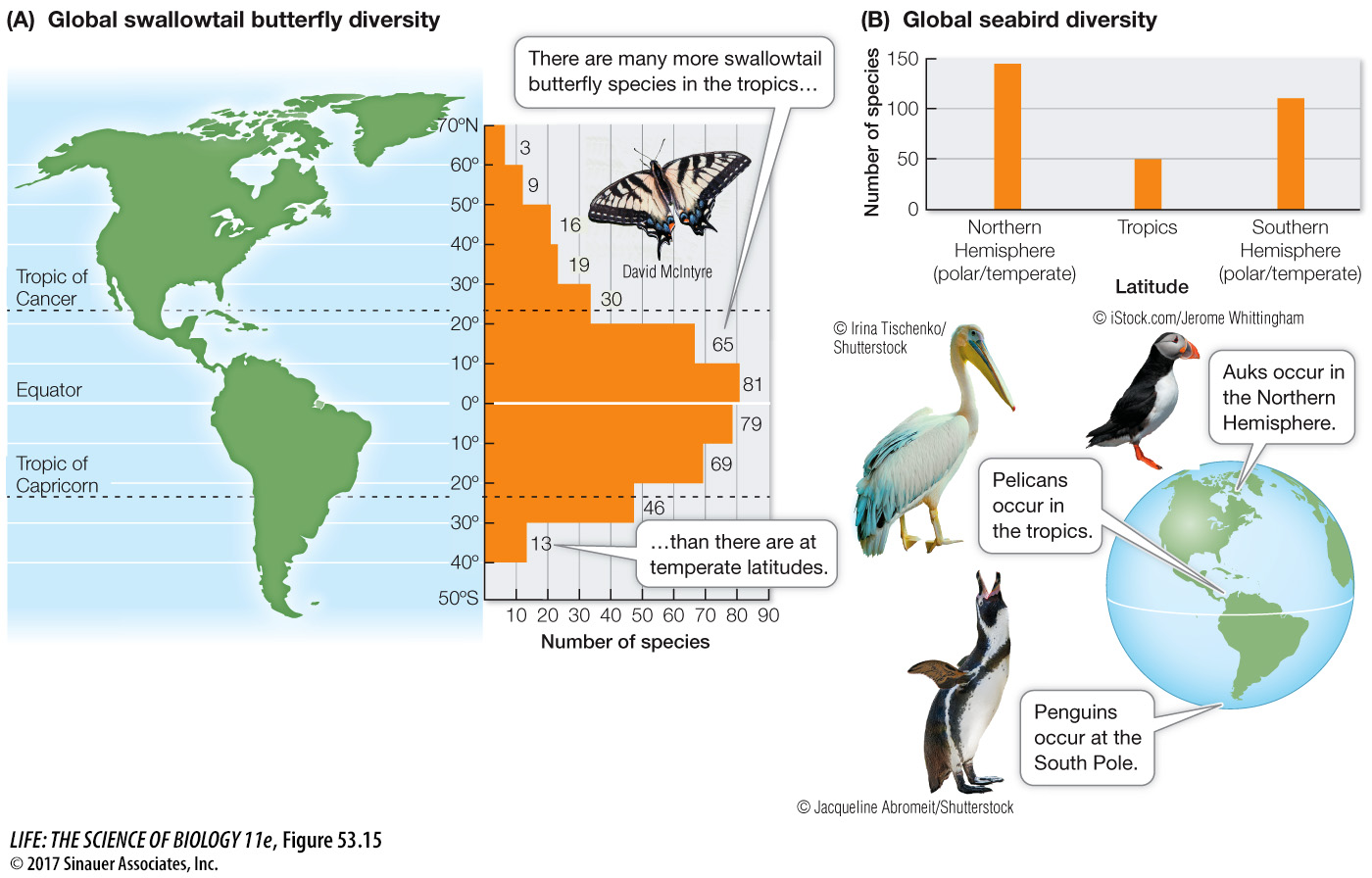Diversity varies with latitude and longitude
About 200 years ago, the German explorer and naturalist Alexander von Humboldt spent 5 years traveling around Latin America. He remarked in the account of his voyages that “the nearer we approach the tropics, the greater the increase in the variety of structure, grace of form, and mixture of colors, as also in perpetual youth and vigour of organic life.” Humboldt and other nineteenth-century scientific explorers such as Wallace and Darwin became keenly aware of this pattern as they collected thousands of species in the tropics and compared them with their more meager collections from Europe. As more observations and collections have been made over the last 200 years, the latitudinal gradient in species diversity has been established for a wide variety of taxa, including some groups of birds, mammals, flowering plants, and insects such as swallowtail butterflies (Figure 53.15A). Significant variation in species diversity is also seen with longitude, but the number of species depends largely on the longitudes chosen.

Figure 53.15 Latitudinal Gradients in Diversity (A) Among swallowtail butterflies (Papilionidae), species richness decreases with latitude both north and south of the equator. (B) Seabirds, by contrast, show a positive relationship between species diversity and latitude: the number of seabird species increases at higher latitudes.
Page 1160
There are intriguing exceptions to the classic latitudinal patterns of species diversity just described. Some taxa show a positive relationship between species number and latitude (Figure 53.15B). That is, among some taxa—for example, seabirds—species number increases at higher latitudes. This pattern of seabird diversity correlates with marine *net primary productivity, which is substantially higher in temperate and polar oceans than in the tropics.
*connect the concepts Net primary production (NPP) is the amount of biomass incorporated into the tissues of primary producers and is the base of all food chains. Oceanic NPP is highest at mid–latitudes. See Key Concept 57.2.
We consider productivity differences along with other explanations of latitudinal gradients in diversity in the next section.
